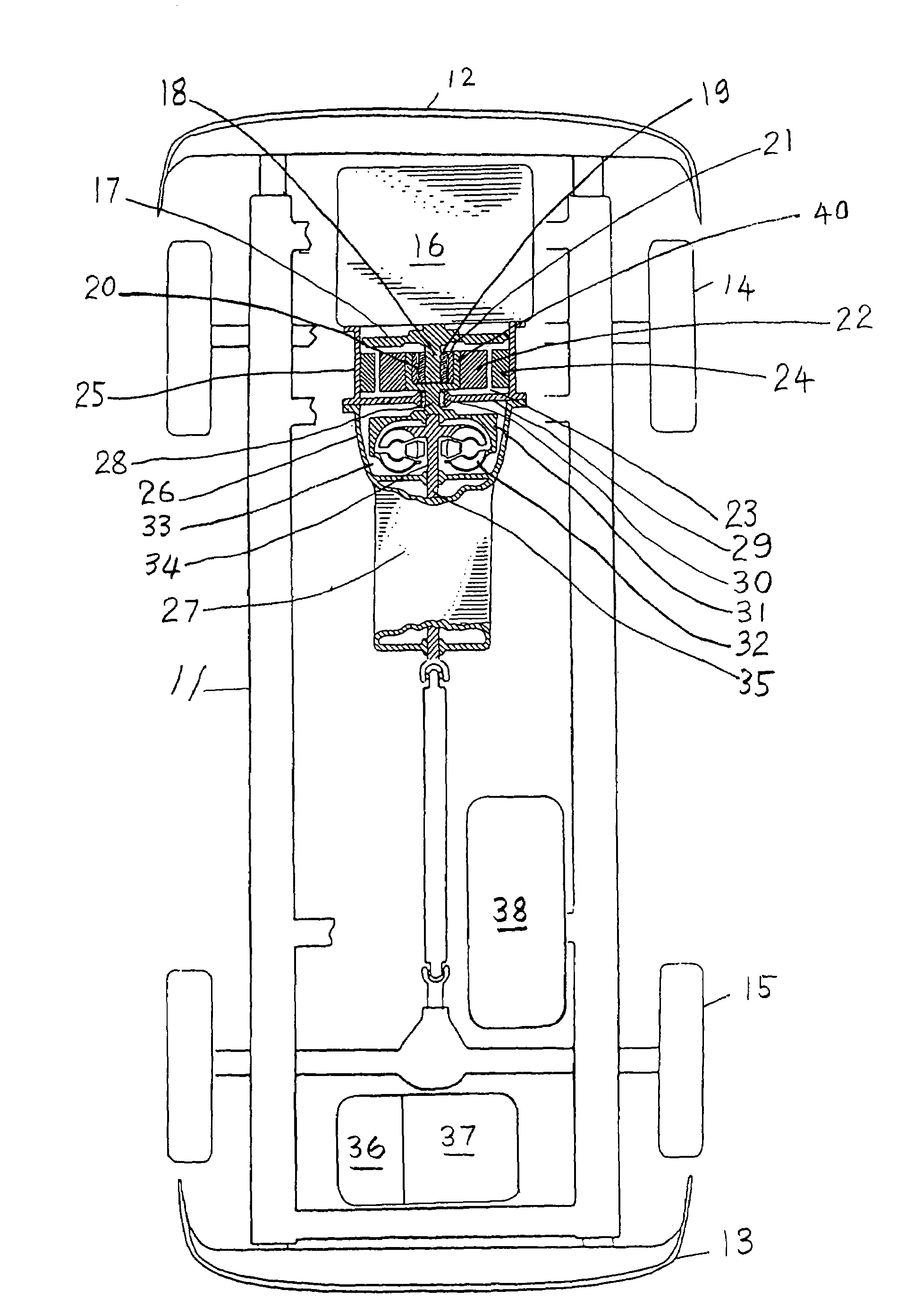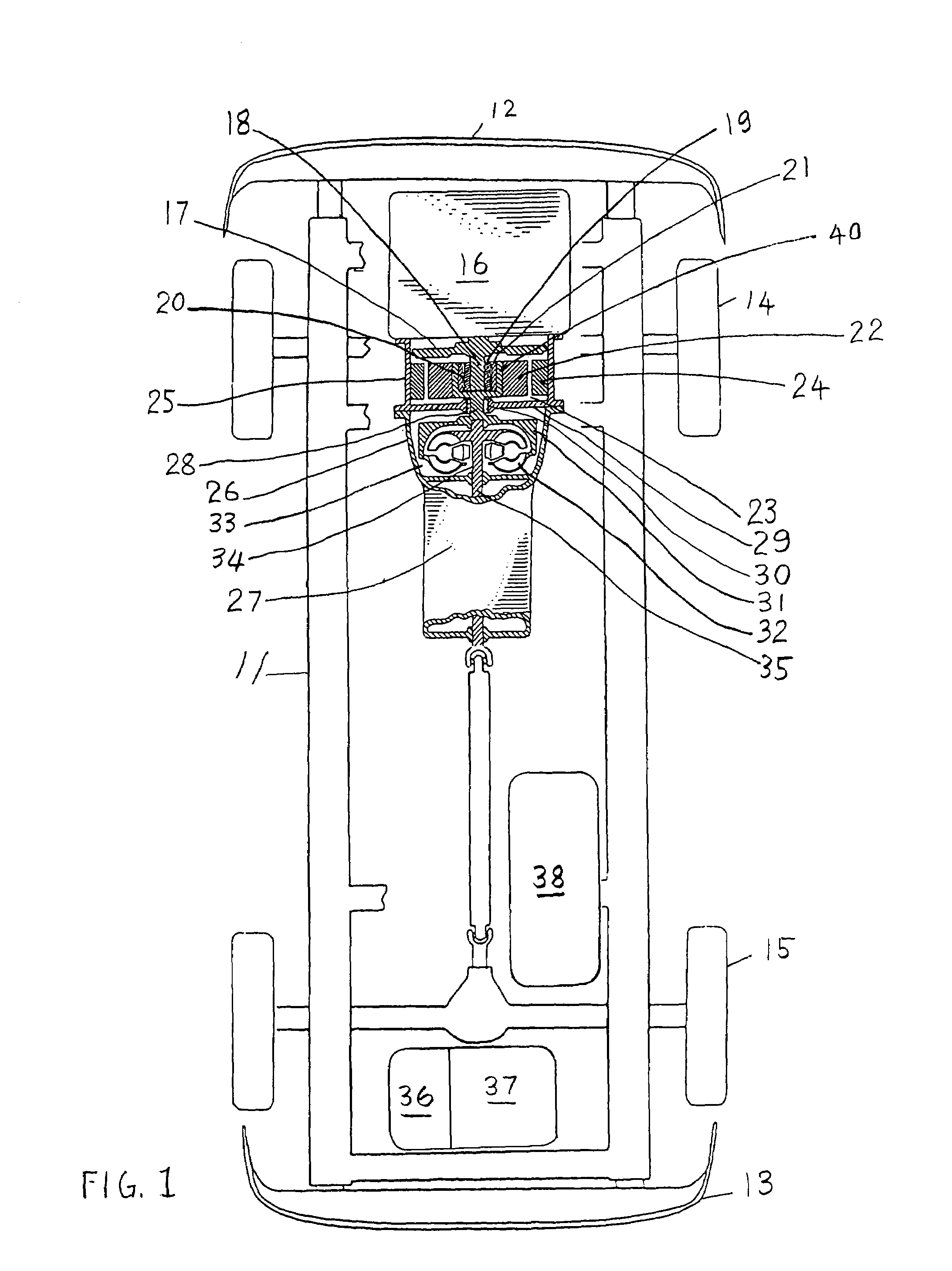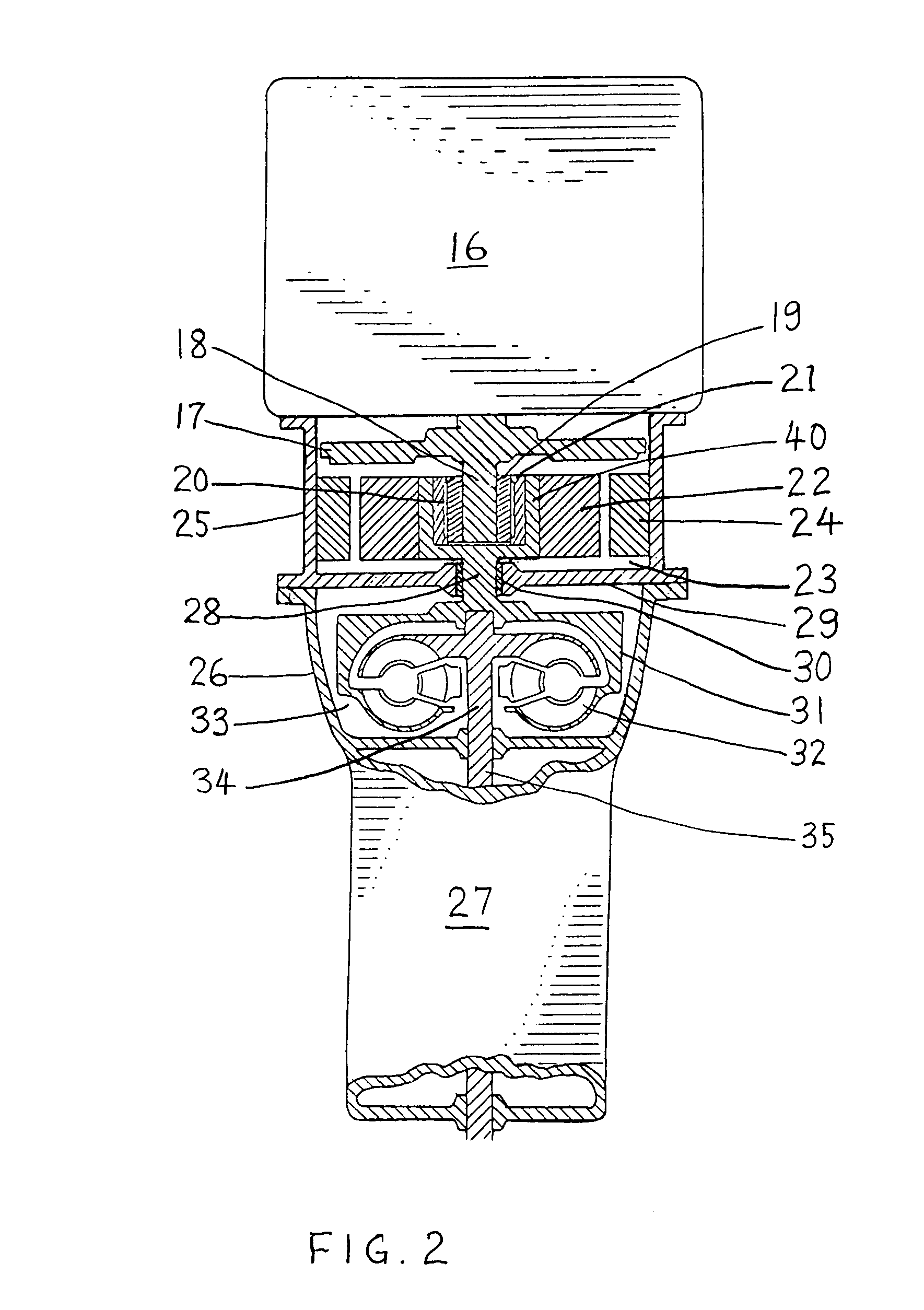Hybrid vehicle having an electric generator engine and an auxiliary accelerator engine
- Summary
- Abstract
- Description
- Claims
- Application Information
AI Technical Summary
Benefits of technology
Problems solved by technology
Method used
Image
Examples
Embodiment Construction
[0050]Referring now to the above drawings wherein one character designates one part of the vehicle, FIG. 1 shows the vehicular chassis 11 connected to the front bumper 12 and rear bumper 13, and supported by front wheels 14 and rear wheels 15.
[0051]Accelerator engine 16, mounted on chassis 11, has flywheel 17 and output shaft 18 interactive with releasable coupling means in the form of sprag clutch 20, whose inner race 19 is fixedly mounted upon output shaft 18. Outer race 21 of sprag clutch 20 is fixedly mounted within the hub 40 of the armature 22 of electric motor 23 so that armature 22 is freely rotatable on output shaft 18 in one direction, particularly when armature 22 is spinning faster than output shaft 18, but would be fixedly locked to output shaft 18 if shaft 18 were to tend to spin faster than armature 22. Field coils 24 of electric motor 23 are mounted on bell housing extension 25 which is fixedly bolted to accelerator engine 16, and upon which bell housing 26 of automa...
PUM
 Login to View More
Login to View More Abstract
Description
Claims
Application Information
 Login to View More
Login to View More - Generate Ideas
- Intellectual Property
- Life Sciences
- Materials
- Tech Scout
- Unparalleled Data Quality
- Higher Quality Content
- 60% Fewer Hallucinations
Browse by: Latest US Patents, China's latest patents, Technical Efficacy Thesaurus, Application Domain, Technology Topic, Popular Technical Reports.
© 2025 PatSnap. All rights reserved.Legal|Privacy policy|Modern Slavery Act Transparency Statement|Sitemap|About US| Contact US: help@patsnap.com



